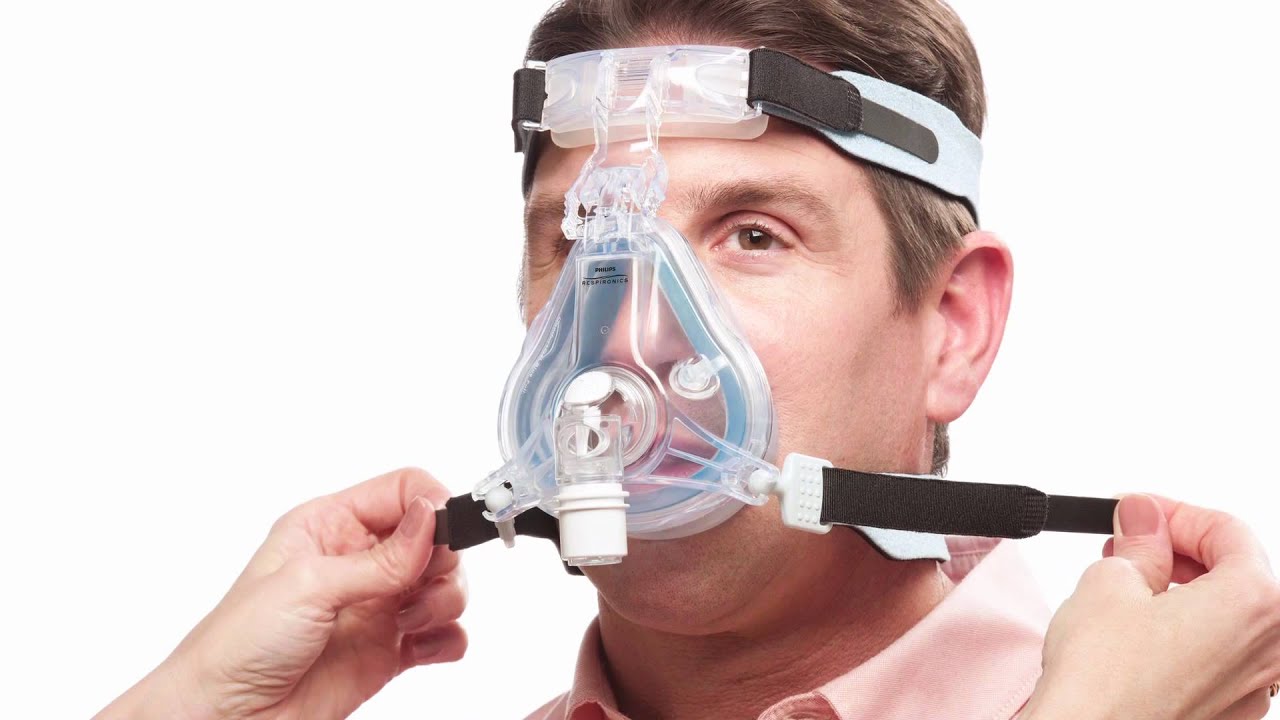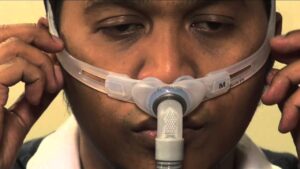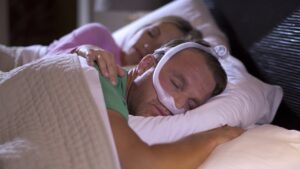Depending on the time of year and where you are situated, you may need to make a little change to your CPAP (Continuous Positive Airway Pressure) treatment.
More humidity in the air during the summer may make using cpap treatment a bit less difficult since the airways do not dry out as much. Learn more causes, symptoms, and treatment of insomnia for better sleep hygiene.
Less humidity in the air throughout the autumn and winter may exacerbate symptoms of inflammation and dryness, including:
- Dry nose
- Bleeding nose
- Dry mouth
Dry mouth, throat, and lips
The outcome of all this inflammation may be increased nasal airway resistance (NAR), which raises the possibility of a mouth leak and reduces the effectiveness of your CPAP treatment.

What can you do to prevent dryness in the winter?
1) Use the CPAP machine with a heated humidifier tank.
A heated humidifier warms water using heat to provide moisture into the CPAP machine’s airstream. You may change the heat to get the wetness you want. The therapeutic efficacy of CPAP patients who utilize heated humidifiers is greater.
Three types of heated humidifiers exist:
- Built-in Humidifiers – If your CPAP machine doesn’t have a built-in humidifier or if you don’t use one, you can use a humidifier.
- Integrated Humidifiers – these humidifiers are designed to be used with CPAP machines and connect directly to them. This choice is practical for travel or other needs.
- Internal humidifiers – This kind of humidifier has a heating element and is used with CPAP machines. The chamber may be removed for cleaning even though it is built-in. The fact that a CPAP has a built-in humidifier is tempting in general is due to the fact that it is a single device and requires less space than adding an external heated humidifier.
2) Employ heated tubes
When utilizing ordinary tubing, condensation inside the tubes (also known as “rainout”) might be an issue. This is especially problematic when the bedroom is chilly. There is minimal chance of this occurring when the humidity is increased because to the added usage of heated tubing.
3) Boost the humidity level
Different manufacturers have different humidity control settings. If you need assistance, speak with your sleep care clinician.
4) Humidity and temperature in the bedroom
Make sure the temperature in your bedroom is not too low and add a humidifier. Condensation may form within the tubing and mask if the air from the CPAP is warmer than the ambient room temperature.
5) Use distilled water instead of regular water.
It’s crucial to use distilled water when using a CPAP humidifier to guarantee there are no bacteria or mineral pollutants. This is a crucial safety precaution that will also lengthen the lifespan of your CPAP machine.

6) Stay hydrated.
To keep your nasal passages moisturized throughout the day, drink plenty of water.
7) Use nasal lubricants with petroleum-free bases.
Use a water-based lubricant to stay hydrated, such as Biotene for dry lips or Secaris for dry nose. Avoid using petroleum-based items since they might harm your CPAP machine.
8) Check the fit of your CPAP mask.
Ask your sleep specialist whether your mask fits properly and if there are any alternative solutions that would be more suitable for you.
CPAP compliance advice to remember Utilizing the CPAP machine for at least four hours each night and on at least 70% of nights is considered compliance.
Although it may seem like a simple criteria to satisfy, CPAP treatment may be difficult, and even long-term users sometimes have difficulties.
At the beginning of their CPAP adventure, almost all patients may relate to some rather typical CPAP treatment issues.
These difficulties include claustrophobia, device fitting, dry mouth, air leakage, and skin rashes.
Each issue has the potential to lead a patient to stop their treatment.
Here are some vital pointers for improving your CPAP compliance success:
1) Inform Yourself
The significance of being informed as a new CPAP user cannot be overstated. Speak with your sleep medicine provider, look for unbiased information sources, study the instruction manuals that came with your device, and ask questions as they arise.
All of these actions may help you become a more knowledgeable CPAP user. Knowing your health concerns and how a lack of sleep affects your general health may sometimes help you concentrate on using your CPAP machine.
2) Check Out Your Gear
Some machines offer a RAMP function that enables users to begin the night at a lower pressure and increase it to the recommended level after they have drifted off to sleep.
These extra functions might sometimes aid novice users in getting used to the pressure and their CPAP mask. You may turn off these extra features after you’ve switched over to using your machine for compliance.
3. Begin slowly
Starting off slowly is quite OK, and we even advise it. Use your mask when you slumber or whenever you feel weary.
We advise beginning by putting on your mask whenever you feel weary, napping in the middle of the day, or unwinding when lying down. As you become used to wearing your mask while breathing compressed air, you’ll start to teach yourself to feel at ease and calm.

4) Adhere to a sleeping schedule
Include using CPAP in your nighttime routine. While you are getting used to using your CPAP machine, it’s crucial to maintain your regular sleeping schedule.
Again, this aids in teaching your body and mind that it is time for bed and that using a CPAP is a necessary aspect of getting some rest. Finding a decent rhythm may be challenging, so feel free to change your practice to suit your needs.
5) Try using a humidifier.
lips, eyes, or nostrils that are dry. It’s great if you haven’t encountered CPAP-related dryness, but if you have, you already understand how uncomfortable it can be.
A humidifier may easily and swiftly solve the problem for the consumer. There are built-in humidifiers and settings that automatically adapt to your preferences on many devices.
6) Keep Track of Your Progress
Although it can seem a little strange to some, keeping note of your real progress and adjustments enables your sleep medicine practitioner to make additional adjustments, provide guidance, and support you in achieving your goals.
Setting up specific objectives and taking concrete actions to reach them will help keep you on track with your CPAP treatment.
7) Stress-Reduction Methods
While you’re getting used to your CPAP machine, try these alternate relaxing methods. You have a variety of alternatives to assist you cope with the challenging process of using your CPAP, including mindful breathing, counting, noises, and other calming activities.
Final thoughts
These suggestions will aid with your CPAP use adjustment, even if this isn’t your first time wearing it. You may be surprised by the positive effects on your general health that a few little changes to your sleep hygiene can have. Finding the appropriate mix of routines and tips might be the difference between successfully using your CPAP treatment and stopping it altogether.




